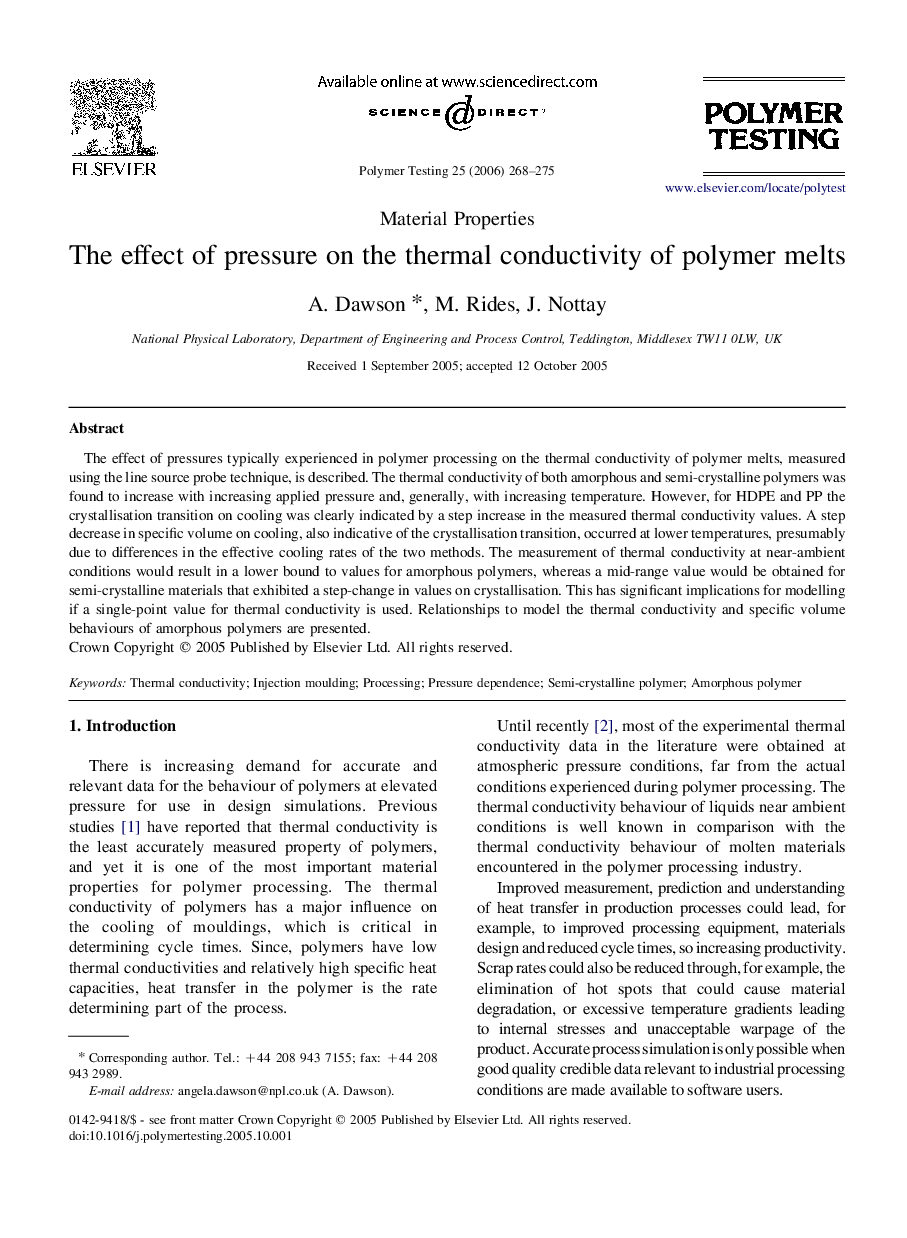| Article ID | Journal | Published Year | Pages | File Type |
|---|---|---|---|---|
| 5207763 | Polymer Testing | 2006 | 8 Pages |
The effect of pressures typically experienced in polymer processing on the thermal conductivity of polymer melts, measured using the line source probe technique, is described. The thermal conductivity of both amorphous and semi-crystalline polymers was found to increase with increasing applied pressure and, generally, with increasing temperature. However, for HDPE and PP the crystallisation transition on cooling was clearly indicated by a step increase in the measured thermal conductivity values. A step decrease in specific volume on cooling, also indicative of the crystallisation transition, occurred at lower temperatures, presumably due to differences in the effective cooling rates of the two methods. The measurement of thermal conductivity at near-ambient conditions would result in a lower bound to values for amorphous polymers, whereas a mid-range value would be obtained for semi-crystalline materials that exhibited a step-change in values on crystallisation. This has significant implications for modelling if a single-point value for thermal conductivity is used. Relationships to model the thermal conductivity and specific volume behaviours of amorphous polymers are presented.
